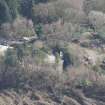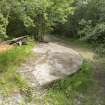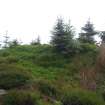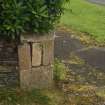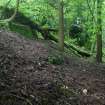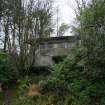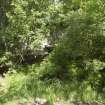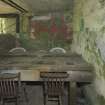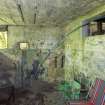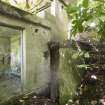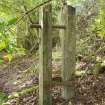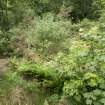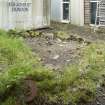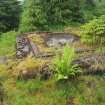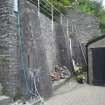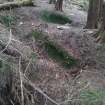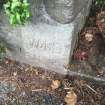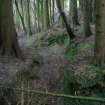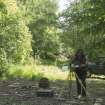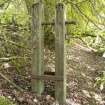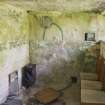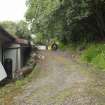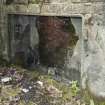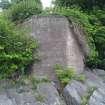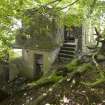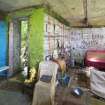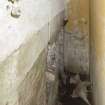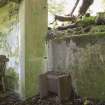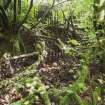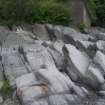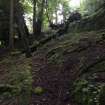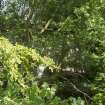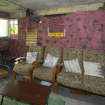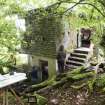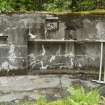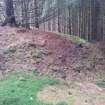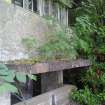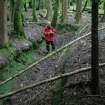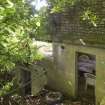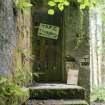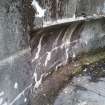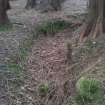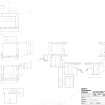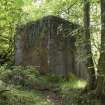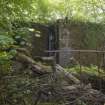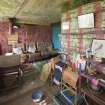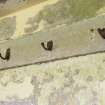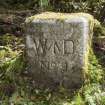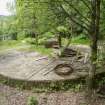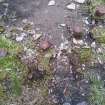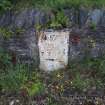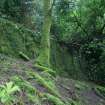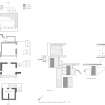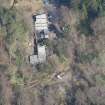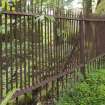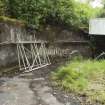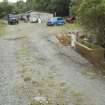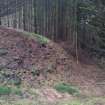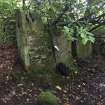Clyde Defences, Ardhallow Battery
Coastal Battery (20th Century), Coastal Battery (Second World War), Coastal Battery (First World War)
Site Name Clyde Defences, Ardhallow Battery
Classification Coastal Battery (20th Century), Coastal Battery (Second World War), Coastal Battery (First World War)
Canmore ID 106363
Site Number NS17SE 6
NGR NS 1626 7414
Datum OSGB36 - NGR
Permalink http://canmore.org.uk/site/106363
- Council Argyll And Bute
- Parish Dunoon And Kilmun
- Former Region Strathclyde
- Former District Argyll And Bute
- Former County Argyll
This coast artillery battery was one of five used during the First World War to defend the important port and ship-building centre on the Clyde. This was a powerful battery of (for most of its life) two 6-inch naval guns, capable of tackling a large enemy warship coming up the river. This battery was paired with one a little to the north on the other bank of the estuary, at Cloch Point (NS27NW 137). The estuary is about 4km wide here, but the guns had a range of almost 11km, firing an armour-piercing shell weighing 45kg.
The battery was built between 18 February 1901 and 30 October 1905, by Aikenhead Builders, Greenock, for a price of £16,000 - around £1M at 2013 values. Work was sufficiently advanced for the guns to be mounted in 1904. At first there were three guns, the third being even larger - a 9.2-inch gun - but this was withdrawn from service in 1906, and physically removed only in 1911. The test firing of the guns, on 2 November 1905, caused considerable damage to the houses south of the battery, and the houses were bought by the War Office in 1907. The battery was equipped with two Defence Electric Lights, large searchlights to illuminate targets at night.
One of the guns was replaced in 1930 and new shields were fitted to both guns in 1931. The Fortress Record Book describes these operations in detail, with photographs.
The battery was unusual in that its two guns remained in place and the battery remained in use right through the Second World War until Coast Artillery was abolished in Britain in 1956. A question was asked in Parliament on 22 July 1909 about the inconvenience to users of the river during the Glasgow holidays, caused by the practice-firing of the battery by Territorial Army artillerymen.
In the First World War such guns would have been mounted in open gun-pits, but during the Second World War, because of the increased danger of attack by aeroplanes, the gun-houses were normally provided with reinforced concrete roofs. It is not clear what was done at this site. Along with the guns there would have been a Battery Observation Post, from which the guns were controlled, ammunition magazines, searchlights and a generator to power them, and accommodation for the gun crews and the large number of other men necessary for the running of the battery and the camp and the feeding of the men.
During the First World War defences were erected on the landward side of the battery, to prevent enemy troops attacking and neutralising it. The core of the battery was surrounded by a cordon of barbed wire, with trenches to the NW, facing uphill. To the SW the summit of Creag nan Can (No. 1 Position, centred at NS 1566 7374) (see NS17SE 6.02) was defended by four blockhouses (pillboxes), ten men in each, with four trenches. To the N, No 3 Position (centred NS 1619 7467) (see NS17SE 6.04) comprised three blockhouses and six trenches. 1.5km to the NW No. 2 Position (centred NS 1485 7474) comprised a further three blockhouses and two trenches (see NS17SE 6.03).
The site of the battery has been partly built over by modern houses, some of which may have adapted original buildings. The Battery Obervation Post (probably extended in the Second World War) survives, as does one of the bases for the battery’s two searchlights. Parts of two gun emplacements may also survive.
Information from HS/RCAHMS World War One Audit Project (GJB) 2 July 2013.
NS17SE 6 1626 7414
NS17SE 6.01 Military Camp NS 1623 7396
NS17SE 6.02 Trenches; Blockhouses Centred NS 1566 7374
NS17SE 6.03 Trenches; Blockhouses Centred NS 1485 7474
NS17SE 6.04 Trenches; Blockhouses Centred NS 1615 7458
A coast battery on the slopes above Ardhallow Dairy. Two gun emplacements with a battery observation post (BOP). Battery mounted 2 x 6in guns during 1940 (PRO: WO 199/2627, 1940; WO HF 719/3/g(O) appendix A, Nov 1943)
Information from CBA 1998.
This World War I and II coastal battery is situated to the W above the A 815 public road where it passes Bull Rock.
The concrete Battery Observation Post (BOP), 1 x 9.2-inch gun emplacement, 2 x 6-inch gun emplacements and engine room are still extant. The searchlight engine room located on the road below is also extant, but is now a private garage.
The 2 x 6-inch Mk VII/II guns, (gun numbers 1340 and 3607) were installed during October 1905 and removed December 1956, the 1 x 9.2-inch gun was also installed during October 1905 and removed during 1911. (information from PRO document WO/192/105).
J Guy 2001; NMRS MS 810/11, Part.1, 54-5; Vol.2 (appendix), 3
Project (March 2013 - September 2013)
A project to characterise the quantity and quality of the Scottish resource of known surviving remains of the First World War. Carried out in partnership between Historic Scotland and RCAHMS.







































































